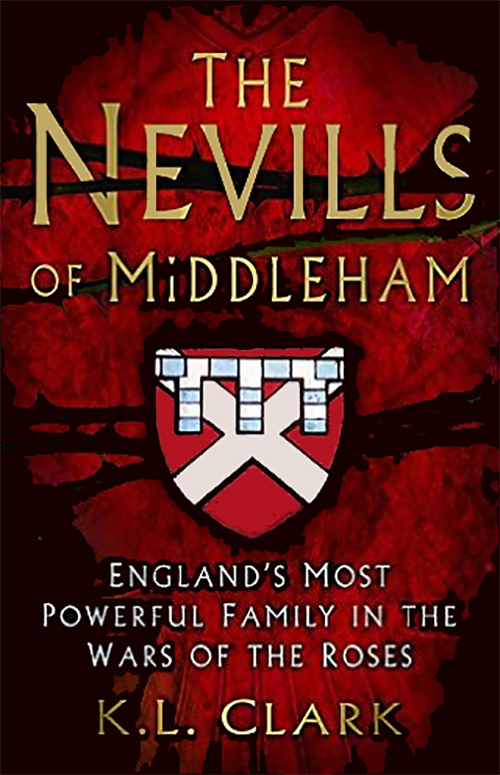The Nevills of Middleham
Book Review

England’s Most Powerful Family in the Wars of the Roses
The Nevills of Middleham. England’s Most Powerful Family in the Wars of the Roses, K.L. Clark, History Press, 2016, £19.99, hardback, ISBN 9780750963657
The Wars of the Roses are rarely studied in detail even in Lancashire and Yorkshire where probably more people today would be better acquainted with the current cricketing rivalries which have appropriated the symbolic badges popularly associated with the historic late medieval conflict between the houses of Lancaster and York. K.L. Clark‘s mission in this substantial volume running to over four hundred pages is to revive interest in the life stories of one of the northern-based families perhaps least known to modern readers, namely the Nevills of Middleham in Yorkshire, whom she is also interested in as both a blogger (www.nevillfeast.wordpress.com) and as an emerging novelist based in Australia, so she would not profess to write primarily for a readership of academic historians.
In 1465, the author claims, the men of this family must have thought they had reached ‘the pinnacle of power and influence in England’. Richard Nevill was ‘the king’s right-hand man’ and married to ‘the richest woman in the kingdom’; John Nevill was an accomplished soldier who had effectively stabilised the new dynasty and George Nevill was not only chancellor but newly enthroned as Archbishop of York. But she also seeks to do justice to the influence of the Nevill women who she maintains were as active as their male counterparts since ‘as sisters and wives, daughters and daughters-in-laws, they had the ears of the elite in England and were not afraid of wielding their influence’. Moreover, ‘they were not always on the same side’.
Successive chapters focus upon the Nevills and the Lancastrian Kings; the Nevills and the Duke of York; the Nevills in Exile; the Nevills in Power; the Nevills in Rebellion and the Last of the Nevills prefaced by over a dozen genealogical tables. A detailed bibliography is also appended including both primary and secondary sources, but engagement is most likely to arise from identification with the author’s sheer enthusiasm for her subject.

